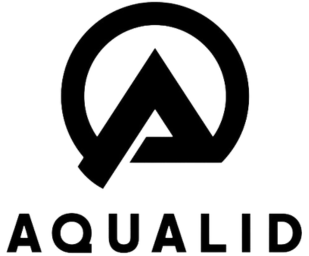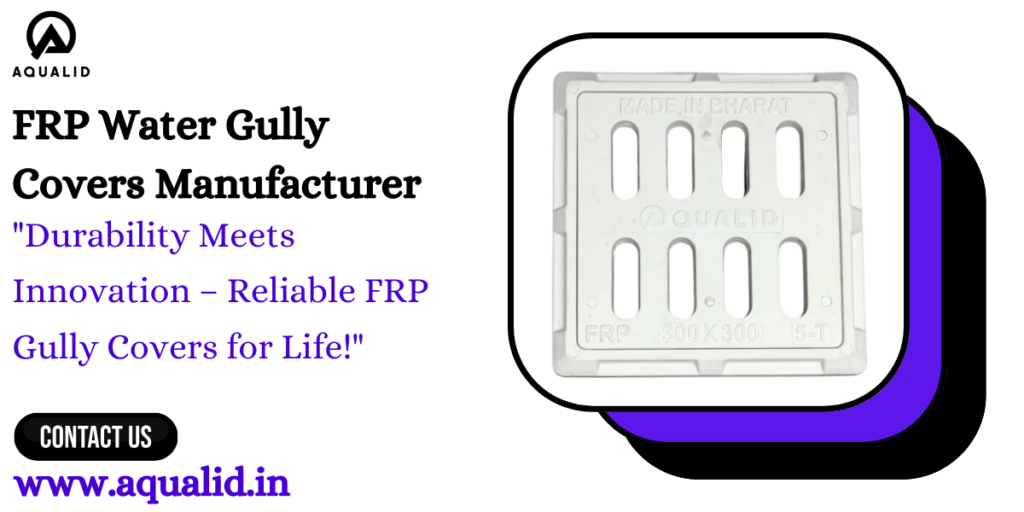FRP Water Gully Covers Manufacturer
FRP Water Gully Covers Manufacturer FRP Water Gully Covers Manufacturer FRP Water Gully Covers Manufacturer/FRP Gully Covers Manufacturer/FRP Water Gully Covers Supplier in Gujarat/FRP Water Gully Covers Provider in Rajkot/FRP Water Gully Covers/ Introduction AQUALID is a leading manufacturer of high-quality FRP (Fiber Reinforced Plastic) and GRP (Glass Reinforced Plastic) manhole covers, designed for durability, strength, and safety. With a commitment to innovation and sustainability, AQUALID provides lightweight, corrosion-resistant, and high-load-bearing solutions for various industries, including municipal, commercial, and industrial applications. Our products are engineered to withstand harsh environments, ensuring long-lasting performance without rusting, breaking, or theft risks. We offer a wide range of customizable designs to meet the specific needs of roads, drainage systems, telecom networks, and water treatment plants. We are the best FRP Water Gully Covers Manufacturer in Gujarat. Water gully covers are crucial parts of drainage systems because they guarantee effective water flow and keep debris and undesired objects out of the drains. These covers have historically been made from materials like steel, concrete, and cast iron. However, FRP (Fiberglass Reinforced Plastic) water gully covers are now the standard choice for contemporary infrastructure projects due to advances in material science. Compared to traditional materials, FRP water gully covers have a number of benefits, such as great strength, resistance to corrosion, lightweight design, and long-lasting durability. Commercial buildings, residential complexes, industrial facilities, and municipal drainage systems all make extensive use of these safeguards. Why Choose FRP for Water Gully Covers? FRP water gully covers’ many advantages have revolutionized the drainage sector. Let’s examine why FRP is the better option: 1. High Ratio of Strength to Weight 2. Resistance to Corrosion and Rust 3. Minimal Care 4. Not Sparking or Conductive 5. Adaptable and Aesthetically Pleasing 6. Sustainable and Eco-Friendly Why Choose AQUALID: Best FRP Water Gully Covers Manufacturer 1. Superior Quality Substances 2. Modern Manufacturing Establishment 3. Numerous FRP Gully Cover Options 4. Personalization and Branding 5. Tested for Load-Bearing Capacity 6. Reasonably Priced 7. Quick Delivery and Trustworthy Customer Support Specifications of FRP Water Gully Covers Property Specification Details Material Fiberglass Reinforced Plastic (FRP) Load Capacity Light-duty, Medium-duty, Heavy-duty Corrosion Resistance High Weight Lightweight & Easy to Handle Customization Available (Colors, Logos, Sizes) Installation Quick and Easy Safety Features Non-conductive, Non-sparking UV Resistance Excellent Weatherproof Resistant to extreme conditions Longevity 20+ years lifespan Chemical Resistance Excellent Fire Resistance High Slip Resistance Textured Surface for Safety Impact Resistance Strong and durable under high-pressure loads Water Absorption Low, ensuring long-term performance Temperature Resistance Withstands extreme hot and cold climates Uses of FRP Water Gully Covers Applications for AQUALID’s FRP water gully covers are numerous and span several industries. They are the best option for many industries due to their adaptability, robustness, and safety features. Here are a few of the main uses: 1. Municipal Drainage Systems 2. Industrial Facilities 3. Residential Areas 4. Commercial Areas 5. Highways and Roads 6. Chemical and Petroleum Facilities 7. Railway stations and airports Conclusion: FRP Water Gully Covers Manufacturer For drainage systems to be safe, durable, and effective over time, selecting a suitable FRP water gully cover is essential. With premium components, advanced engineering, and first-rate customer service, AQUALID is dedicated to offering the best FRP solutions. Our products have a long service life, high strength, and low maintenance because they are made to withstand harsh environmental conditions. We are the best FRP Water Gully Covers Supplier in Gujarat. AQUALID remains a prominent brand in the FRP sector by prioritizing innovation, sustainability, and customer satisfaction. AQUALID offers premium solutions that are suited to your requirements, whether you require standard or customized FRP gully covers. We are the best FRP Water Gully Covers Provider in Rajkot. Selecting AQUALID FRP water gully covers guarantees a durable, reasonably priced, and dependable drainage solution that satisfies environmental sustainability objectives and industry standards. With the superior FRP covers from AQUALID, you can upgrade your drainage system right now and see the difference in durability, performance, and quality. Get in toch with us right now.



